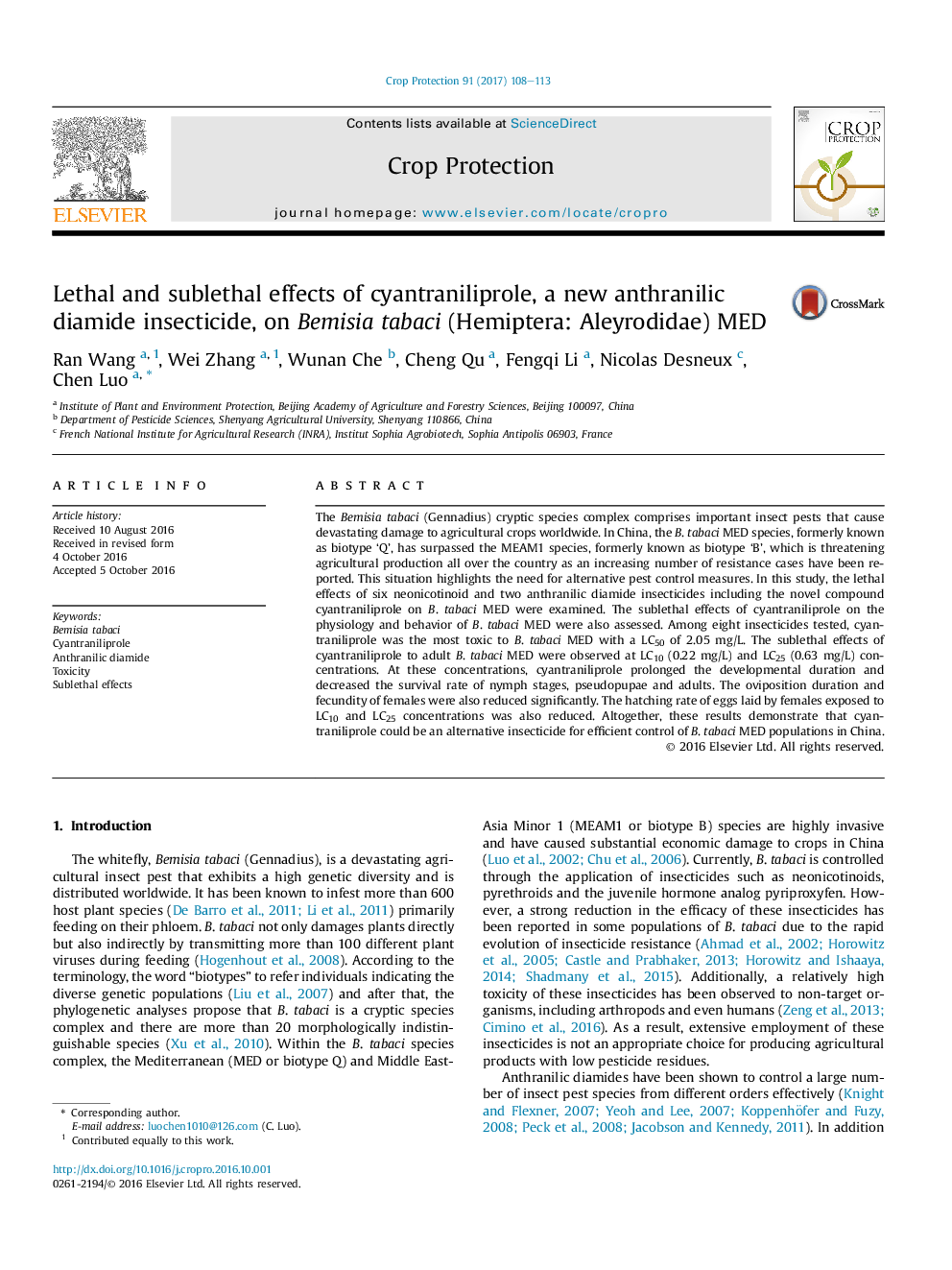| Article ID | Journal | Published Year | Pages | File Type |
|---|---|---|---|---|
| 6373076 | Crop Protection | 2017 | 6 Pages |
Abstract
The Bemisia tabaci (Gennadius) cryptic species complex comprises important insect pests that cause devastating damage to agricultural crops worldwide. In China, the B. tabaci MED species, formerly known as biotype 'Q', has surpassed the MEAM1 species, formerly known as biotype 'B', which is threatening agricultural production all over the country as an increasing number of resistance cases have been reported. This situation highlights the need for alternative pest control measures. In this study, the lethal effects of six neonicotinoid and two anthranilic diamide insecticides including the novel compound cyantraniliprole on B. tabaci MED were examined. The sublethal effects of cyantraniliprole on the physiology and behavior of B. tabaci MED were also assessed. Among eight insecticides tested, cyantraniliprole was the most toxic to B. tabaci MED with a LC50 of 2.05Â mg/L. The sublethal effects of cyantraniliprole to adult B. tabaci MED were observed at LC10 (0.22Â mg/L) and LC25 (0.63Â mg/L) concentrations. At these concentrations, cyantraniliprole prolonged the developmental duration and decreased the survival rate of nymph stages, pseudopupae and adults. The oviposition duration and fecundity of females were also reduced significantly. The hatching rate of eggs laid by females exposed to LC10 and LC25 concentrations was also reduced. Altogether, these results demonstrate that cyantraniliprole could be an alternative insecticide for efficient control of B. tabaci MED populations in China.
Related Topics
Life Sciences
Agricultural and Biological Sciences
Agronomy and Crop Science
Authors
Ran Wang, Wei Zhang, Wunan Che, Cheng Qu, Fengqi Li, Nicolas Desneux, Chen Luo,
